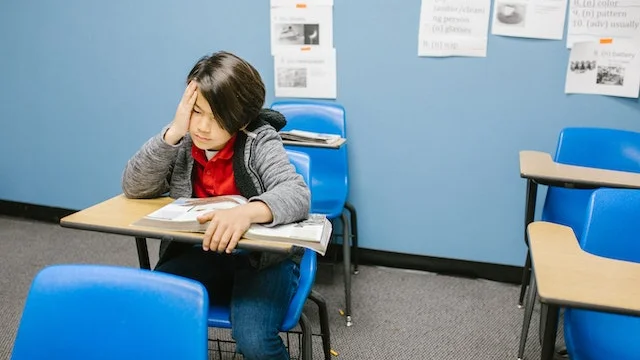During the Covid-19 pandemic, the rates of teen depression surged, revealing alarming disparities in the treatment provided. A recent study conducted in 2021 showed that approximately 20 percent of adolescents experienced symptoms of major depressive disorder, but less than half of those in need received the necessary treatment.
The research highlighted significant gaps in access to treatment for minority groups, particularly Latino and mixed-race adolescents. In a society increasingly impacted by mental health challenges, it is crucial to address these inequities and ensure timely and quality mental health services for all young individuals.
Background: Teen Depression and the Pandemic
Teen depression has been a growing concern for many years, with the prevalence of major depressive disorder among adolescents nearly doubling between 2009 and 2019.
However, with the onset of the Covid-19 pandemic, the rates of teen depression have skyrocketed even further. The pandemic brought about isolation, uncertainty, loneliness, and fear of illness, all of which have had a significant impact on the mental health of teenagers.
1. Prevalence of Teen Depression during the Pandemic
The first full calendar year of the pandemic, 2021, saw a staggering increase in the number of adolescents experiencing symptoms of major depressive disorder.
According to a study published in JAMA Pediatrics, approximately 20 percent of adolescents had symptoms of major depressive disorder in 2021. This represents a significant jump from previous years and highlights the serious impact of the pandemic on teenage mental health.
1.1 Major depressive disorder among adolescents
Major depressive disorder is a chronic condition characterized by episodes of depressed mood and loss of joy, with symptoms lasting for at least two weeks. It is important to distinguish major depressive disorder from persistent depressive disorder, in which symptoms last for two years or more.
The prevalence of major depressive disorder among adolescents was already on the rise before the pandemic, but the Covid-19 crisis has exacerbated this trend.

1.2 Increase in teen depression rates during the pandemic
The Covid-19 pandemic has presented numerous challenges for teenagers, including disrupted education, limited social interactions, and increased stress and anxiety.
These factors, combined with the fear of illness and the loss of routine and structure, have contributed to a significant increase in teen depression rates. The study mentioned earlier found that the prevalence of major depressive disorder among adolescents rose to 20 percent in 2021, marking a disturbing jump in a short period of time.
2. Treatment Disparities for Teen Depression
While the rates of teen depression have surged during the pandemic, unfortunately, the same cannot be said for treatment rates. The study mentioned earlier found that less than half of adolescents who needed treatment for major depressive disorder received it.
This treatment gap is particularly pronounced among minority adolescents, highlighting the existing disparities in mental health care.
2.1 Study on treatment rates for teen depression
The study on the prevalence of major depressive disorder in 2021 surveyed a nationally representative sample of 10,700 adolescents aged 12 to 17. The results revealed stark differences in treatment rates across racial and ethnic groups. White adolescents had the highest rates of receiving treatment, with nearly half seeking and receiving help for their condition.
On the other hand, mixed-race and Latino adolescents, who had the highest rates of major depressive disorder, had the lowest treatment rates. Only 21 percent of mixed-race adolescents and 29 percent of Latino adolescents with the condition received treatment.
2.2 Treatment gaps among racial and ethnic groups
The treatment disparities among racial and ethnic groups are deeply concerning. The study found that approximately 14.5 percent of Black adolescents, 14.6 percent of Asian adolescents, and 23 percent of
Latino adolescents reported symptoms of major depressive disorder. Despite similar rates of mental health issues, treatment rates varied significantly. This highlights the existing inequities and barriers that minority adolescents face when seeking mental health care.
2.2.1 Disparities for Latino and mixed-race adolescents
Latino and mixed-race adolescents experienced higher rates of major depressive disorder compared to other racial and ethnic groups. However, they had the lowest rates of receiving treatment.
This disparity is a significant concern, as it means that these vulnerable populations are not accessing the mental health support they desperately need. Addressing these disparities is crucial in ensuring the well-being of all adolescents.
2.2.2 Treatment rates for Asian and Black adolescents
While Asian and Black adolescents had treatment rates that fell between those of white adolescents and Latino/mixed-race adolescents, the fact remains that there are still gaps in care for these populations.
Mental health care should be accessible and equitable for all individuals, regardless of their racial or ethnic background. Increased efforts are needed to bridge these treatment gaps and provide support to those in need.
3.2 Targeting adolescents and marginalized populations
Moving forward, it is imperative to address the treatment disparities highlighted by the pandemic. Policymakers and clinicians must prioritize the mental health of adolescents as a whole, with a particular focus on marginalized populations.
Timely access to high-quality mental health treatment should be ensured for all adolescents, regardless of their race, ethnicity, or socioeconomic background.
The pandemic has shone a spotlight on the existing inequities in mental health care, and it is crucial that steps are taken to rectify these disparities. By prioritizing mental health, increasing access to care, and providing targeted support for marginalized populations, we can better support teenagers facing depression and ensure their overall well-being.
Together, we can create a future where every teenager has the necessary resources and support to overcome their mental health challenges.

